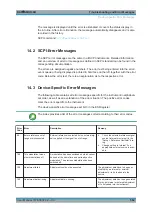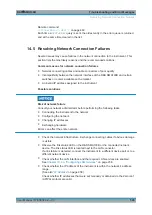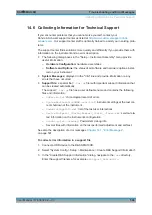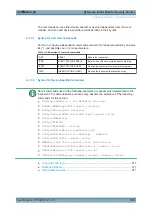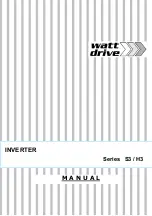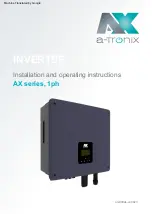
Reference Information for Remote Control
R&S
®
SMA100B
516
User Manual 1178.3834.02 ─ 03
A.1.3.5
Structure of a Command Line
A command line may consist of one or several commands. It is terminated by one of
the following:
●
<New Line>
●
<New Line> with EOI
●
EOI together with the last data byte
Several commands in a command line must be separated by a semicolon ";".
Example:
MMEM:COPY "Test1","MeasurementXY"
;:
HCOP:ITEM ALL
This command line contains two commands. The first command belongs to the MMEM
system, the second command belongs to the HCOP system. If the next command
belongs to a different command system, the semicolon is followed by a colon.
Example:
HCOP:ITEM ALL
;:
HCOP:IMM
This command line contains two commands. Both commands are part of the
HCOP
command system, i.e. they have one level in common.
If the successive commands belong to the same system, having one or several levels
in common, the command line can be abbreviated. When abbreviating the command
line, the second command begins with the level below HCOP. The colon after the sem-
icolon is omitted. The abbreviated form of the command line reads as follows:
HCOP:ITEM ALL
;
IMM
Example:
HCOP:ITEM ALL
HCOP:IMM
A new command line always begins with the complete path.
A.1.3.6
Responses to Queries
A query is defined for each setting command unless explicitly specified otherwise. It is
formed by adding a question mark to the associated setting command. According to
SCPI, the responses to queries are partly subject to stricter rules than in standard
IEEE 488.2.
●
The requested parameter is transmitted without a header.
Example:
HCOP:PAGE:ORI?
, Response:
LAND
●
Maximum values, minimum values and all other quantities that are requested via a
special text parameter are returned as numeric values.
Example:
SENSe:FREQuency:STOP? MAX
, Response:
3.5E9
●
Numeric values are output without a unit. Physical quantities are referred to the
basic units or to the units set using the
Unit
command. The response
3.5E9
in
the previous example stands for 3.5 GHz.
Additional Basics on Remote Control

